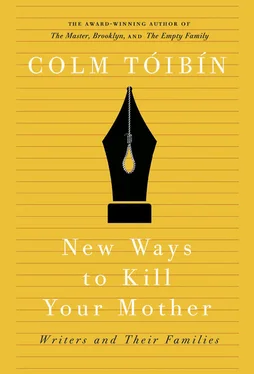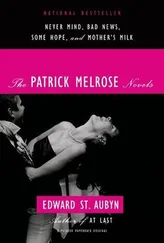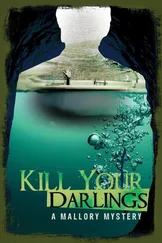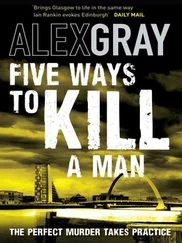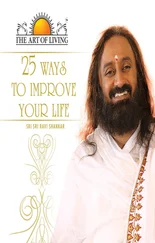In Ireland, the Yeatses gave up the house in Merrion Square for a flat in Fitzwilliam Square, and then in 1932 moved to a large house with a garden south of Dublin. When de Valera came to power Yeats flirted briefly with the Blueshirts, a semi-comic Irish Fascist group. George did not share his sympathies. She hated the Blueshirts. Unlike her husband, she was a de Valera supporter and voted Fianna Fáil.
After the Rapallo sojourn he bounced back, writing to Olivia Shakespear in 1933 that the writing of the Crazy Jane poems was ‘exciting and strange. Sexual abstinence fed their fire — I was ill yet full of desire. They sometimes came out of the greatest mental excitement I am capable of.’ Two years later he told Iseult Gonne, who told Richard Ellmann, that ‘everything was terrible. He and his wife had gradually been alienated — he said she was a mother rather than a wife — that she had humiliated him in public.’ By then he had had a vasectomy, and begun to receive injections that increased his sexual desire in the very years when he was mourning lost sexual opportunities in his youth. ‘Wonderful things have happened,’ he wrote to Olivia. ‘This is Baghdad. This is not London.’
The old poet started then to make up for lost time. Just as in the 1890s he had moved between Dublin and London, reinventing himself at each crossing, now forty years later London was once more a place that offered freedoms not available in Dublin. In his seventies, with a few years left, he began to have love affairs. George nursed him when he returned exhausted, and seemed concerned that his friends should hear regular news about his condition before he set off again. In January 1935 she wrote to Gogarty: ‘I would rather he died in happiness than in invalidism. He may not have told you of all his past 18 months’ activities. One of them is that he has been very much in love with a woman in London.’ She told Richard Ellmann that she said to him: ‘After your death people will write of your love affairs, but I shall say nothing, because I will remember how proud you were.’ In June 1936, having left Yeats with Dorothy Wellesley, with whom he was having an affair, she returned to Dublin. Robinson wrote to Dolly: ‘W. B. is not coming back at the moment to G’s relief, though Olive says she wants him back as soon as possible (she knows). I think I know that G at any rate wants to play roulette on Sat — and not have Willy.’ Earlier, however, when she went with him to Liverpool, but did not see him off on the boat for Spain, she wrote: ‘I felt too like the dog who sees his master going for a walk and leaving him at home.’
In other words, her response to his affairs was ambivalent. She drank and was often ill; she was also lonely as Anne left home and Michael went to boarding-school. Nonetheless, she was practical and managerial and full of understanding, even writing to his new loves various accounts of his medical needs. She seems to have encouraged his regular decamping. When he read out loud to George a paragraph of one girlfriend’s letter that suggested that he and the woman might not travel to France alone, ‘she laughed at the idea of our not going alone. That means her blessing… Other people’s minds are always mysterious and I wanted that blessing.’
Blessings might have come easy, but perhaps the most extraordinary aspect of her self-sacrifice was her willingness to cross the Irish Sea with him as far as Holyhead, accompany him through customs, get him on the train in the direction of one of his liaisons, and then return alone on the same day to Dublin. ‘It was,’ Saddlemyer writes, ‘a long day: an 8.25 train in order to catch the mail boat at Kingstown (now Dun Laoghaire), landing at Holyhead at 11.45, and departing again at 2.30 for arrival in Ireland at 5.25 p.m. This would become a regular routine.’ No wonder she was drinking.
By the beginning of 1939, Yeats was in the South of France with George; Dorothy Wellesley and her friend Hilda were close by; and Edith Shackleton, another of his lovers, soon arrived. On Friday 27 January, when he lapsed into a coma, Dorothy saw him for a few minutes, then Edith sat by his bedside; the following day, watched over by George, he died. All three women attended the poet’s burial at Roquebrune near Menton on 30 January.
As George returned to Ireland, she must have known that she had deprived the nation of one of its greatest joys — a big funeral. There was always something wonderful about the way she kept apart from Irish patriotism and fanaticism and puritanism; her arrival home now without the body of the great poet was almost heroic. As she set about comforting her family, however, the country went into spasm. Maud Gonne wrote to de Valera, the President and the Abbey Theatre, urging that Yeats be buried in Ireland. The poet F. R. Higgins, representing the board of the Abbey Theatre, replied: ‘We are making every endeavour to have the remains brought home to Ireland… I know personally he had a passionate desire to rest in Sligo.’ The theatre’s message to George about the matter was, as Saddlemyer says, ‘aggressive in its urgency’. The Dean of St Patrick’s in Dublin offered a grave in the cathedral. De Valera hoped ‘that his body will be laid to rest in his native soil’. What was interesting about all this, besides the national ghoulishness in full flow, was that, since George Yeats had remained so private and reserved and in the background during her years in Ireland, no one felt a need to mention her in their statements. Clearly, the Englishwoman Yeats had married was not cut out to become the national widow.
Yeats did indeed wish to be buried in his native soil, but he had witnessed the funeral of George Russell, the poet Æ, in 1935, and been appalled by the level of pomp. Five months before he died he had written to Dorothy Wellesley: ‘I write my poems for the Irish people but I am damned if I will have them at my funeral. A Dublin funeral is something between a public demonstration & a private picnic.’ In March 1939, George wrote to MacGreevy that Yeats had asked to be buried in Roquebrune ‘and then in a year’s time when the newspapers have forgotten me, dig me up and plant me in Sligo’. George waited until Richard Ellmann came to Dublin in 1946 to report that her husband had also said: ‘I must be buried in Italy, because in Dublin there would be a procession, with Lennox Robinson as chief mourner.’
When the first biography appeared, she wrote to Frank O’Connor that she was ‘afraid now that it is on the market I will meet people in Dublin who will ask me what I think of the book, so I will slink as I did after Yeats’s death round back streets to avoid the people who said: “You will bring him back, won’t you?”’ His body was finally brought back in 1948, but, after much confusion in the graveyard in France and many versions of the story, it seems unlikely that the bones in the casket brought to Ireland did in fact belong to Yeats.
In 1965, the year of Yeats’s centenary, three years before the death of George, Frank O’Connor made an oration over the grave in Sligo. He said: ‘Another thing he would have wished me to do — and which I must do since none of the eminent people who have written of him in his centenary year has done so — is to say how much he owed to the young Englishwoman he married, and who made possible the enormous development of his genius from 1916 onward.’
In the same year, when Pound came to London for Eliot’s memorial service, he announced that he wished to fly to Dublin on his way back to Italy. George, by then, only answered the phone at ten o’clock in the morning. On this day, by some miracle, she answered it when it rang at three o’clock in the afternoon, and took a taxi to the Royal Hibernian Hotel to meet Pound, who was travelling with Olga Rudge.
Читать дальше
